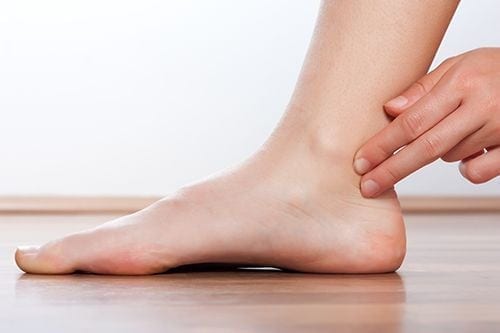People with diabetes are often more prone to heart and circulation problems, such as peripheral artery disease (PAD). It is important to know the causes and symptoms of PAD and ways to minimize the risk of heart disease. Learn about PAD and diabetes and what you can do about it.
- PAD can develop due to atherosclerosis which involves the narrowing of the blood vessels in your feet and legs. Fatty deposits in the blood vessels can restrict circulation. Over 20 % of people over 65 develop this condition but people with type 2 diabetes have an even higher risk. Diabetes is also more associated with heart disease and stroke. PAD may present with no symptoms. Others may have a feeling of numbness, soreness, aching feet or tingling and/or coldness in the feet and legs. Your legs may get painful, tight or cramp when you walk or exercise. Some people get a “pins and needles” sensation in their lower legs. Other find sores or cuts on their feet and legs that are slow to heal. People with diabetes should inspect their feet and legs every day for irregularities. If you experience these symptoms have them checked out as a precaution.
- There are risk factors for developing PAD. Knowing these factors can alert people who may not experience symptoms. The risk factors include high LDL (“bad”) cholesterol, diabetes, poor blood sugar control, high blood pressure, inactivity and obesity. Additional risk factors include smoking and a lack of physical activity. Share family history with your doctor during routine exams and have your cholesterol tested.
- There are ways to screen for this condition including an ultrasound. Another test for PAD is the ABI (ankle-brachial index) which measures the ratio of blood pressure in your feet and arms to find out how well blood is flowing thru your body. Other tests recommended by your physician may include a MRA (Magnetic Resonance Angiography) or a CT scan (Computed Tomographic Angiography). The physician will see if your test is abnormal and suggest the best way to treat you.
- Life style changes are usually the first way to manage PAD. Maintain a healthy weight to reduce your risks. Use a blood pressure monitor to check yourself at home. Exercise and get moving for 30 minutes daily even if you need to break it into 10-minute intervals. Quit smoking; if you have trouble, talk to your doctor about ways to kick the habit. Keep your blood sugar levels in check through proper diet, exercise and taking medications according to the guidelines.
- PAD is treated with a combination of medication, procedures and lifestyle changes. There are minimally invasive procedures done by interventional radiologists when lifestyle changes are not adequate. These procedures are done at an out patient setting are allow you to go home the same day with a band aid. An angioplasty can open up the vessel by using an inflated balloon or an atherectomy can remove the plaque blockage with a tiny catheter or stent. In its advanced stages, surgery might be done to reroute or open up the restricted blood vessels.
- Lifestyle changes include reducing the salt, fat and cholesterol in your daily diet. Eat wholesome foods produced by nature. Over time, patients will be advised to walk more often, as this can help reduce the pain associated with PAD. Doctors may recommend aspirin or antiplatelet medicines to thin the blood so it flows more freely. Keep your blood sugar levels in check. Use a monitor to check your blood glucose daily. Talk to your doctor about proper A1C levels and using an A1C home testing kit to check your 3 month average as well. Know the correct numbers that you are looking for.
While people with diabetes are at a greatly increased risk of developing PAD, it does not have to happen to you. Healthy lifestyle habits, regular medical exams, screening and monitoring your own health can make a difference. Talk to your doctor about ways to prevent and treat PAD for a longer, healthier life.







Leave A Comment